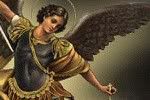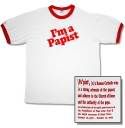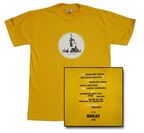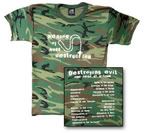Assisi's Famous Son Was No Dr. Doolittle
St. Francis, Minus the Myths; Rosary PowerPerhaps the end to this portion of the article is not exactly the nicest or best ending (I would have included many places besides Europe in the 'luxury-loving, increasingly secular' category), but the rest of it seems to me to be a great reflection on the true identity of this much-beloved Saint. It seems more and more people are speaking out about the hard-core nature of Saint Francis and calling us all to remember that he was not a 'hippy saint'. Following this portion of the article was talk of Saint Dominic, founder of the Dominican Order. (Obviously.)
Assisi's Famous Son Was No Dr. Doolittle
By Elizabeth Lev
ROME, OCT. 5, 2006 (Zenit.org).- Last week I spent several days in Assisi with a pilgrimage group. It was a wonderful adventure tooling around the Umbrian countryside and praying at the sites of the great saints, but it was also an eye-opening experience for me to realize that the St. Francis venerated today is a pretty far cry from the St. Francis who lived next to a leper colony outside Assisi in the 1220s.
Unlike the green, rolling hills of Tuscany, the Umbrian terrain is harsh and rugged, with jagged mountain ranges and thick forests teeming with wolves and boar. As the wilderness of the Middle East produced exemplary models of austerity among the desert Fathers of the early centuries, so did the wilds of Umbria in the Middle Ages. This single Italian region produced extraordinary followers of Christ, the likes of Benedict, Scholastica, Francis, Clare and Rita of Cascia (just to name a few).
The pilgrims were Benedictine, so we visited the sites of St. Benedict and Scholastica, Norcia, Subiaco and Montecassino. The Benedictine monasteries perch atop high mountains in secluded areas, seemingly just a few steps from heaven. By contrast, the Basilica of St. Francis and the Porziuncola (the place where Francis lived) sits on the lowest part of Assisi, a city on the much-traveled route to Perugia.
While St. Benedict's monasticism encouraged intense dedication to God in a more individualistic way, St. Francis and his friars applied themselves to public service, which in this day and age makes them seem like a cuddly, user-friendly order.
Assisi itself furthers the image of an ecology-loving, animal-hugging Francis, with illustrated stories of dancing friars in meadows and conversations with birds. He comes across as a kind of fun-loving, 13th-century Dr. Doolittle.
But Francis was prickly and difficult for people in the 13th century, quite different from the modern picture-book version.
Francis was the son of a wealthy cloth merchant. Not landed aristocracy, Francis' father belonged to a new, rising Italian class who had worked their way out of peasantry through trade. Francis' father had great hopes for him, and was determined that Francis would never know want, the way his parents had.
Standing in Assisi, one wonders what we would have thought had we been bystanders as the umpteenth fight broke out between Francis and his father. We might well have sided with Francis' father. He had worked all his life to give Francis fine clothes, good food and a warm home -- and all the thanks he got was a kid who stole from the family shop and spent all day hanging around the town outcasts.
What would we have made of Francis as he stripped off all his clothes and threw them at his father, renouncing his family name? Would we have immediately understood, as Francis rejoiced that he would now only have his "Father in Heaven"?
Francis lived in an age of newfound wealth and accessible education. The 13th century saw vast amounts of trade as well as universities cropping up all over Europe. His extreme example of poverty challenged people to disdain the luxury goods that were just becoming more available. His humility and his willingness to be mocked and ridiculed confounded the arrogance of the increasingly educated classes.
He was an uncomfortable figure and even the great Pope Innocent III hesitated to confirm his rule as Francis' example seemed unattainable.
We smile warmly when we think of Francis arranging the first Nativity scene, but we easily forget these were living people on a gelid night in Umbria. Francis sought to emphasize the humility of Christ's birth, not the Christmas-card charm of the scene.
Greater than Francis' devotion to the Nativity, in fact, was his dedication to the Passion. He composed an Office of the Passion and promoted art, prayer and meditation on Christ's suffering. His focus on all the aspects of Christ's passion was rewarded with the stigmata -- Francis was the second man in the history of the church (the first being St. Paul) to bear the same wounds as the crucified Christ.
Even during his own lifetime, Francis saw immense difficulties in his own order. Many of his followers worked against him, trying to render the Franciscan example less radical. Even the quaint painting in the Basilica of St. Francis, "Francis Preaching to Birds," renders the saint praising God to this unlikely congregation precisely because he has been betrayed by some of his own followers, unheeded by his fellow citizens and doubted by the pastors of the Church.
Francis felt called to bring his challenging style of preaching and his radical example of Christ to the Holy Land to try to convert the Muslims. In the era of the Crusades, Francis went to the Holy Land fully expecting to be a martyr in his quest to bring the word of God to the sultan.
He set off with 12 brothers and the small band was captured and beaten. Eventually they ended up in Cairo where Francis was able to engage Islamic scholars in theological debate. The shrine of St. Francis proudly bears the gift given to the saint by the sultan, who was deeply impressed with Francis' example and words.
Francis is perhaps best known as the author of the "Canticle of the Creatures" -- today touted as a kind of ecological manifesto -- but while everyone can remember the part about "Brother Sun" or "Sister Mother Earth," few recall "Sister Bodily Death," who seems to be an uncomfortable medieval leftover. But "Sister Death" is precisely the point of the poem, the warm tone of the canticle stops abruptly when Francis admonishes, "Woe to those who die in mortal sin!"
Addressing all of his followers, Francis wrote frightening words on the fate of him who dies in mortal sin. "The devil tears his soul from his body with so much anguish and tribulation," Francis wrote. "Worms eat the body; and so perishes body and soul in that brief life span and he shall go to hell."
So this year, to honor the feast day of St. Francis, patron of Italy, perhaps instead of just recycling our trash or adopting a pet, we should pray for luxury-loving, increasingly secular Europe to rediscover its Christian identity and soul.
Labels: Saints













1 Comments:
I read this a few days ago. It was very intresting. I have never really thought of St. Francis as a "hippie tree hugger". Does anyone actually view him as such.
I've always considered him a remarkable man of deep prayer, who's desire to be close was so strong that he forsaked his every possession and became one of the greatest saints to ever walk the earth.
Post a Comment
<< Home